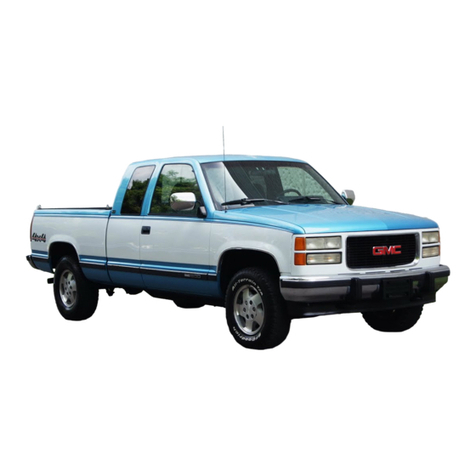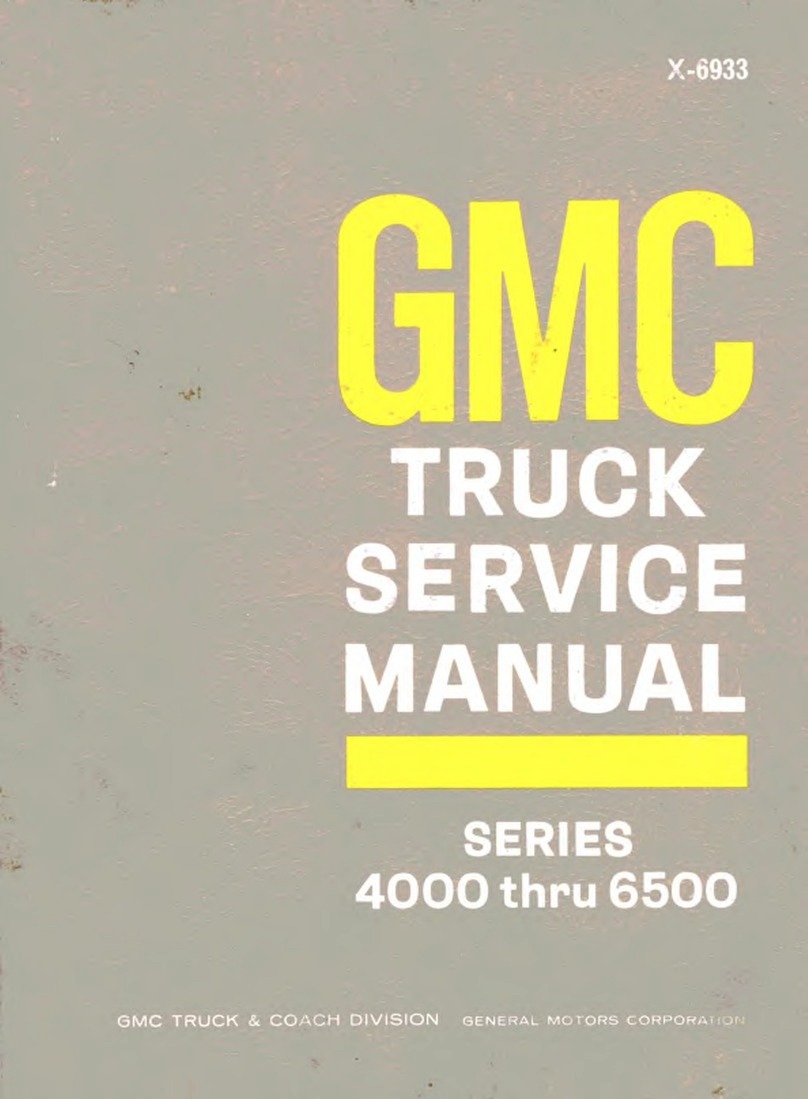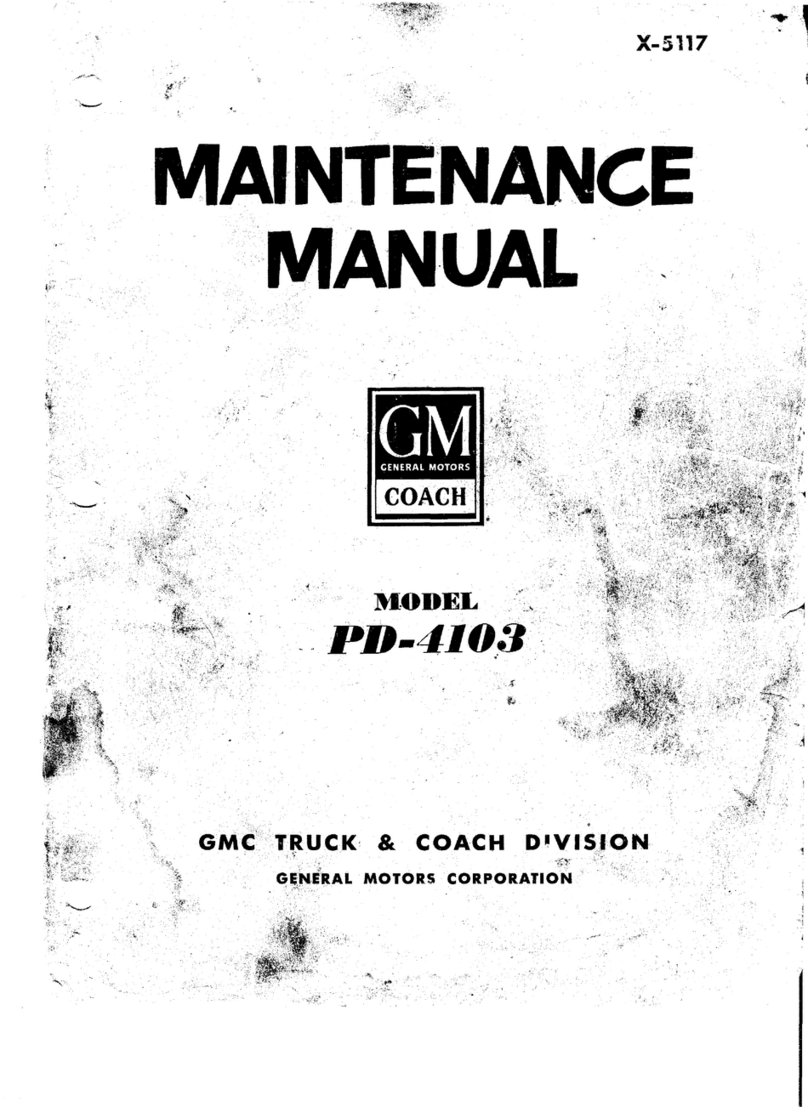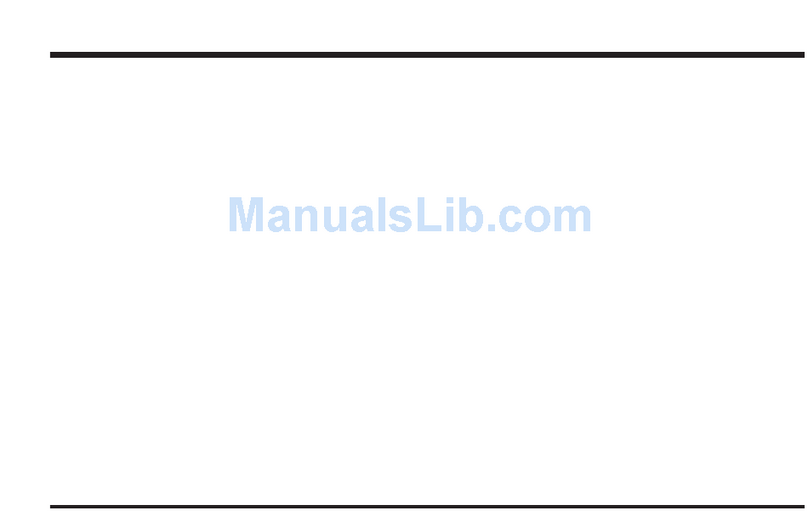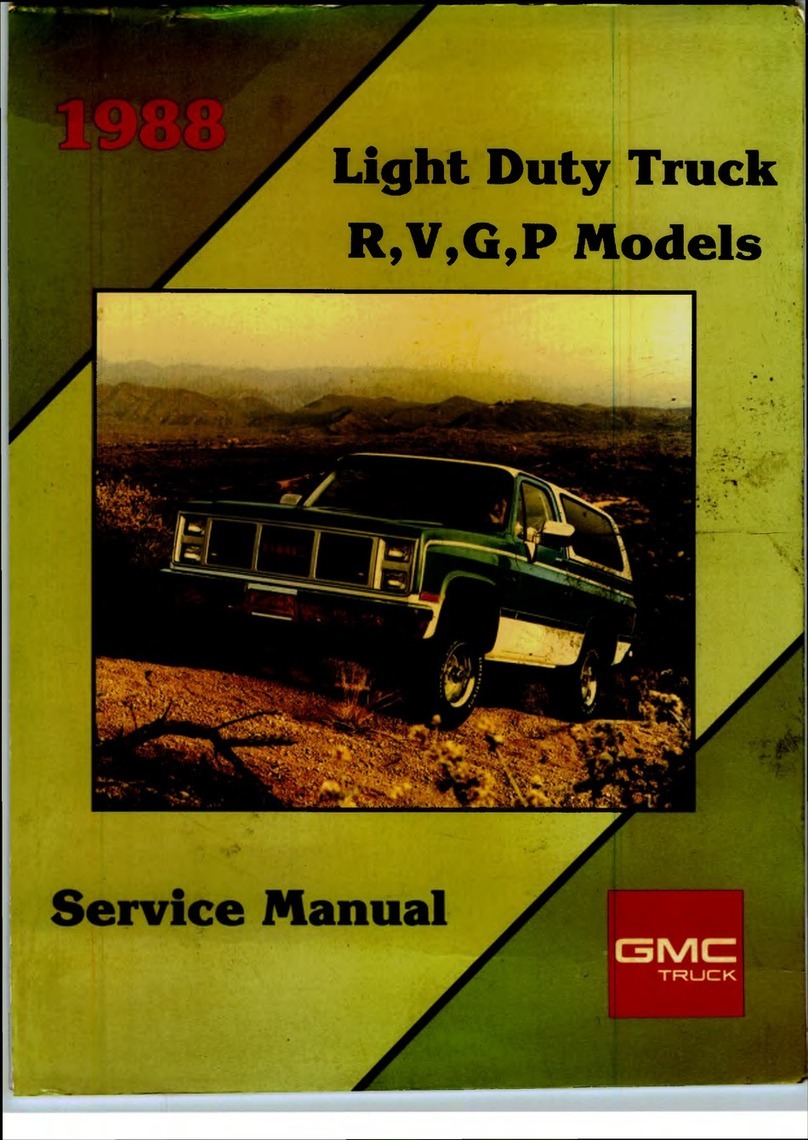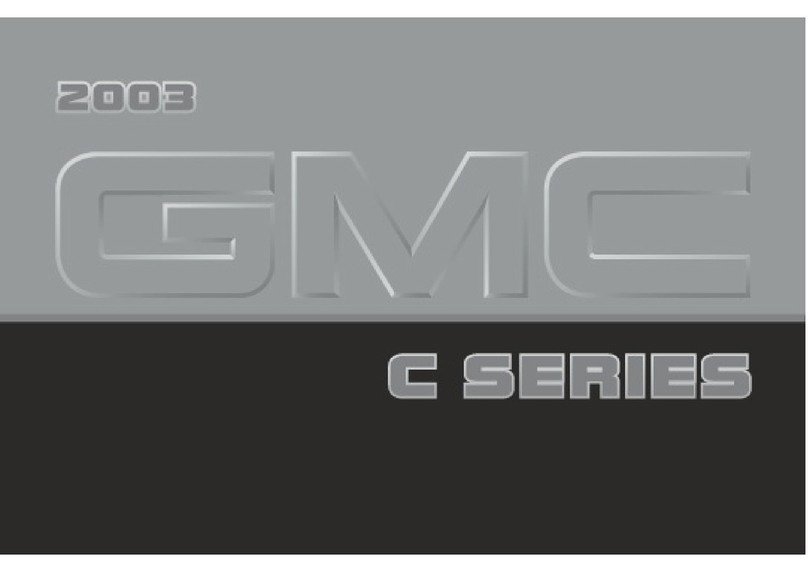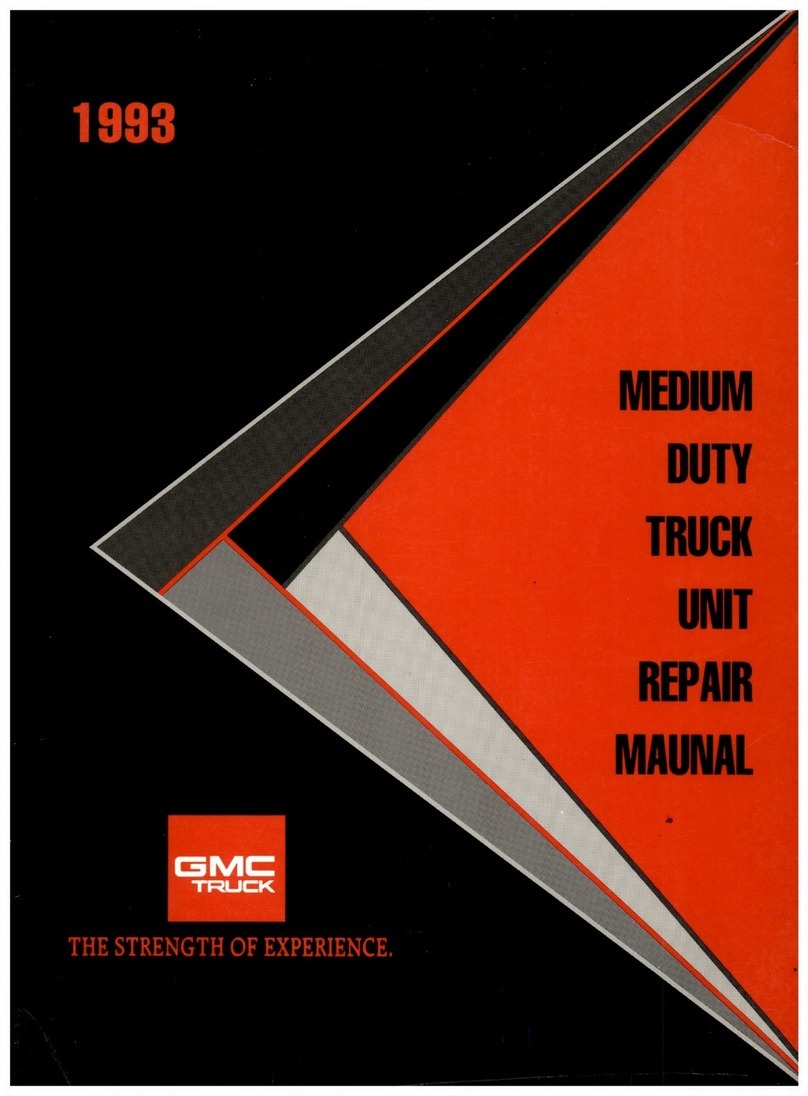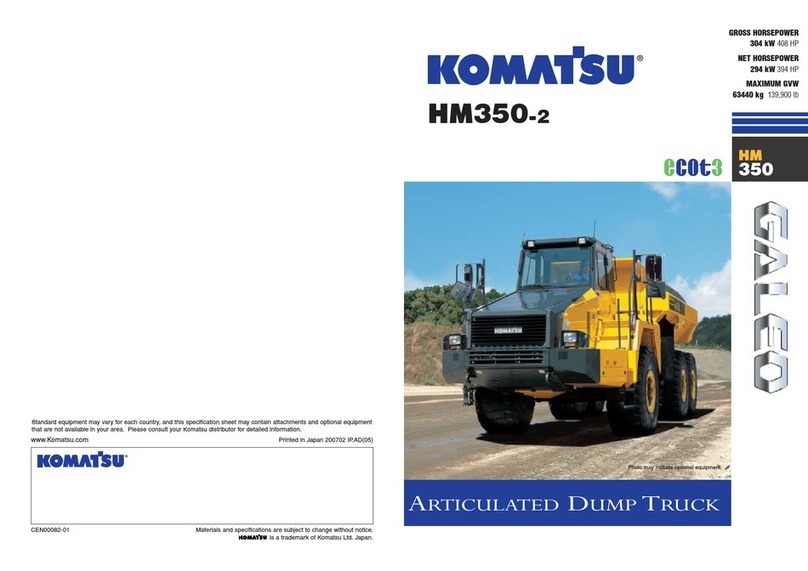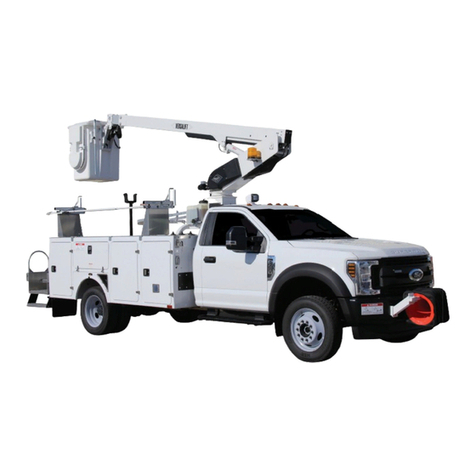2010 GMC T-Series Owner Manual M
Seats and Restraint System ...................... 1-1
Front Seats ....................................... 1-2
Safety Belts ...................................... 1-7
Child Restraints . . . . . . . . . . . . . . . . . . . . . . . . . . . . . . . . . 1-25
Restraint System Check . . . . . . . . . . . . . . . . . . . . . . . . . 1-36
Features and Controls ............................ 2-1
Keys ............................................. 2-2
Doors and Locks ................................. 2-3
Windows ......................................... 2-4
Starting and Operating Your Vehicle . . . . . . . . . . . . . . 2-7
Mirrors . . . . . . . . . . . . . . . . . . . . . . . . . . . . . . . . . . . . . . . . . . 2-33
Storage Areas . . . . . . . . . . . . . . . . . . . . . . . . . . . . . . . . . . . 2-34
Instrument Panel . . . . . . . . . . . . . . . . . . . . . . . . . . . . . . . . . 3-1
Instrument Panel Overview . . . . . . . . . . . . . . . . . . . . . . . 3-4
Climate Controls . . . . . . . . . . . . . . . . . . . . . . . . . . . . . . . . 3-17
Warning Lights, Gages, and Indicators . . . . . . . . . . 3-20
Audio System(s) . . . . . . . . . . . . . . . . . . . . . . . . . . . . . . . . 3-40
Driving Your Vehicle .............................. 4-1
Your Driving, the Road, and the Vehicle . . . . . . . . . . 4-2
Towing . . . . . . . . . . . . . . . . . . . . . . . . . . . . . . . . . . . . . . . . . . 4-20
Service and Appearance Care . . . . . . . . . . . . . . . . . . . 5-1
Service ........................................... 5-3
Fuel . . . . . . . . . . . . . . . . . . . . . . . . . . . . . . . . . . . . . . . . . . . . . . 5-7
Checking Things Under the Hood . . . . . . . . . . . . . . . 5-16
Rear Axle . . . . . . . . . . . . . . . . . . . . . . . . . . . . . . . . . . . . . . . 5-46
Cab Tilting ...................................... 5-47
Noise Control System . . . . . . . . . . . . . . . . . . . . . . . . . . . 5-54
Bulb Replacement .............................. 5-55
Windshield Wiper Blade Replacement . . . . . . . . . . . 5-55
Other Service Items . . . . . . . . . . . . . . . . . . . . . . . . . . . . . 5-56
Tires ............................................ 5-59
Appearance Care . . . . . . . . . . . . . . . . . . . . . . . . . . . . . . . 5-69
Vehicle Identification . . . . . . . . . . . . . . . . . . . . . . . . . . . . 5-76
Electrical System . . . . . . . . . . . . . . . . . . . . . . . . . . . . . . . . 5-76
Capacities and Specifications . . . . . . . . . . . . . . . . . . . 5-85
Normal Maintenance Replacement Parts . . . . . . . . 5-88
Maintenance Schedule . . . . . . . . . . . . . . . . . . . . . . . . . . . 6-1
Maintenance Schedule . . . . . . . . . . . . . . . . . . . . . . . . . . . 6-2
Customer Assistance Information ............... 7-1
Customer Assistance and Information . . . . . . . . . . . . 7-2
Reporting Safety Defects . . . . . . . . . . . . . . . . . . . . . . . . . 7-9
Vehicle Data Recording and Privacy . . . . . . . . . . . . . 7-11
Index .................................... i-1


